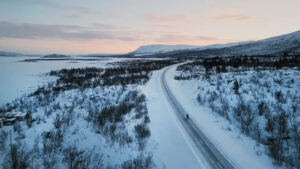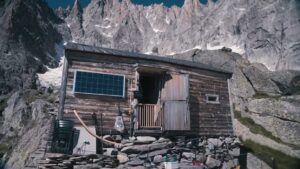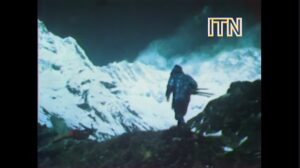We often head into the wilderness seeking high adventure, fresh vistas, and icy horizons spooling out endlessly in front of us.
In other moments, we seek a glimpse of serenity. A feeling of being at peace with the natural world around us. Sometimes we just need to sit in awe.
So it goes in Waterwalker, the final film from legendary Canadian polymath Bill Mason.

Photo: Screenshot
As a canoeist, author, painter, photographer, naturalist, and filmmaker, Mason was a versatile explorer and interpreter of the northern waterways. His books and films introduced entire generations of North Americans to the lifestyle of paddling and canoeing. Though he died in 1988, he is still remembered fondly in Canada and elsewhere.
Watching Waterwalker, it’s easy to see why.
An accomplished filmmaker
Mason’s soft-spoken, philosophical approach to both canoeing and filmmaking is on full display in the film.
His camera lingers on small details — the flap of a line against water, the textures and colors of a lichen-crusted cliff face, the glassy sparkle of sunlight over the surface of Lake Superior.
In these hectic and complicated times, it might take hours or even days for a paddler to notice such subtle minutia. In Mason’s skilled hands, a viewer of Waterwalker is transported to a state of appreciation almost immediately.
Waterwalker is a deliberate film. Viewers expecting snappy editing or even a cohesive story are sure to be disappointed. But Mason seems to be aware of this and addresses it almost immediately via his customary good-natured voiceover.

Photo: Screenshot
He tells a story of a meeting with film executives during an unnamed point in his career. After watching his documentary footage, the executives start spinning out “exciting” storylines — a plane crash, a ravenous pack of wolves, threats descending from all around.
Mason wasn’t having it. He took his footage and left the meeting.
“There’s no bad guys at all. It’s just you and me,” he concludes at the end of the story, “paddling the biggest and most spectacular lake in the world: Lake Superior.”
The eye, the lens, the brush
That’s not to say Waterwalker is devoid of excitement. Mason was a supremely skilled whitewater canoeist, and an extended sequence towards the middle of the film showcases those skills to greater effect.
But even here, Mason is pensive about his relationship with water.

Photo: screenshot
“There are times when I crave the company of my whitewater friends and the thrill of running rapids. The problem is that there’s no slowing them down. All they want to do is get to the next rapid. And when I go with them, I find myself getting caught up in that too. If there’s anything more fun than horsing around in rapids, I’d like to hear about it,” Mason says over footage of him and some companions gracefully threading canoes in and out of standing waves, holes, and other features.
“But after a while I look forward to getting back to my painting and sketching. And for that [I] have to be alone,” he continues.
Drawing inspiration from English master J.M.W. Turner, Mason painted landscapes with an eye toward color and the inherent drama of the natural world. Turner was a painter in the Romantic school, but his loose style and provocative use of color strongly heralded the Impressionist movement that would come on the heels of his death.
Mason tapped into this spirit with his work in oils, often turning to a palette knife to render the sharp stone lines and swaying vegetation he noticed in the cliffs that towered over him.

Photo: screenshot
And like any painter, Mason wasn’t above fudging a few small details in the service of spectacle.
“I cheated. That’s all the best stuff over the last few years,” Mason explains in reference to how he got such good footage on a single paddling trip around Lake Superior.
“So there you are. Film can be deceiving,” he continues. “But when it comes to the beauty of the world out here, the camera has not lied.”






